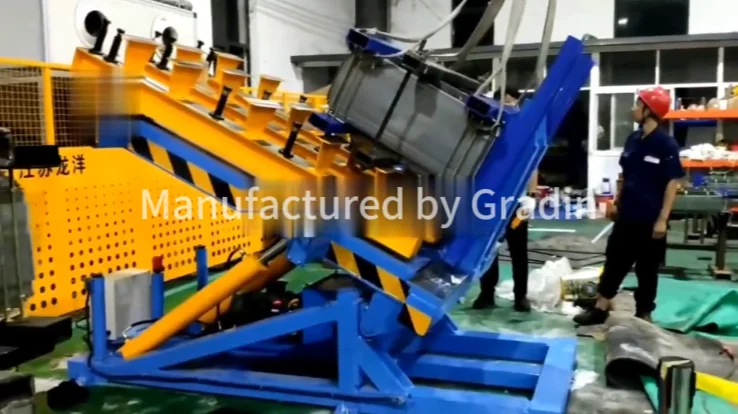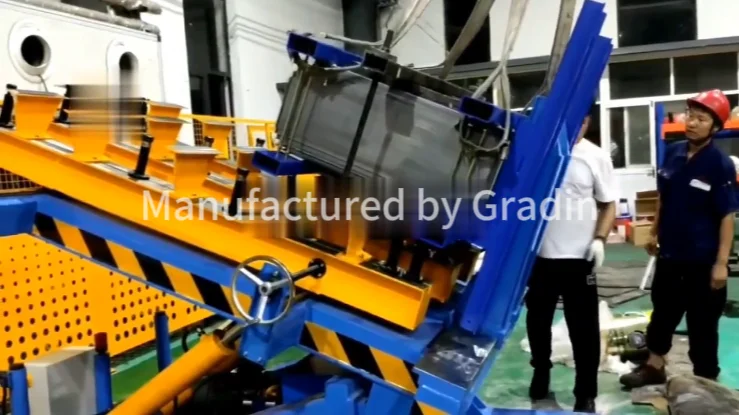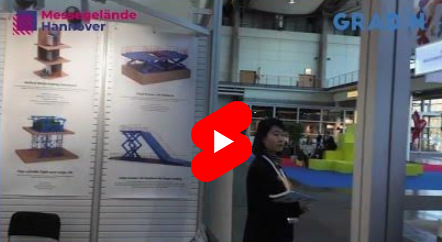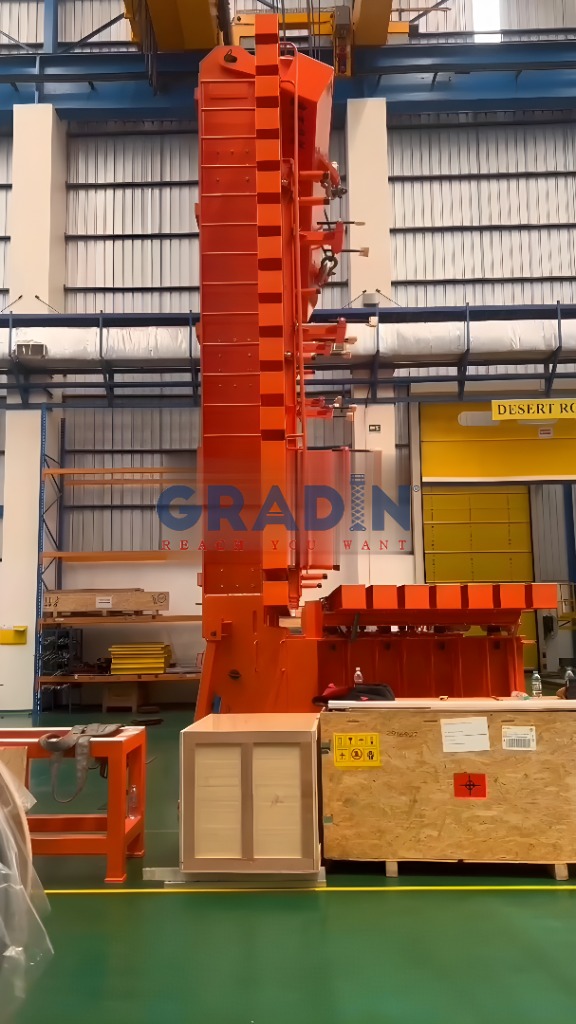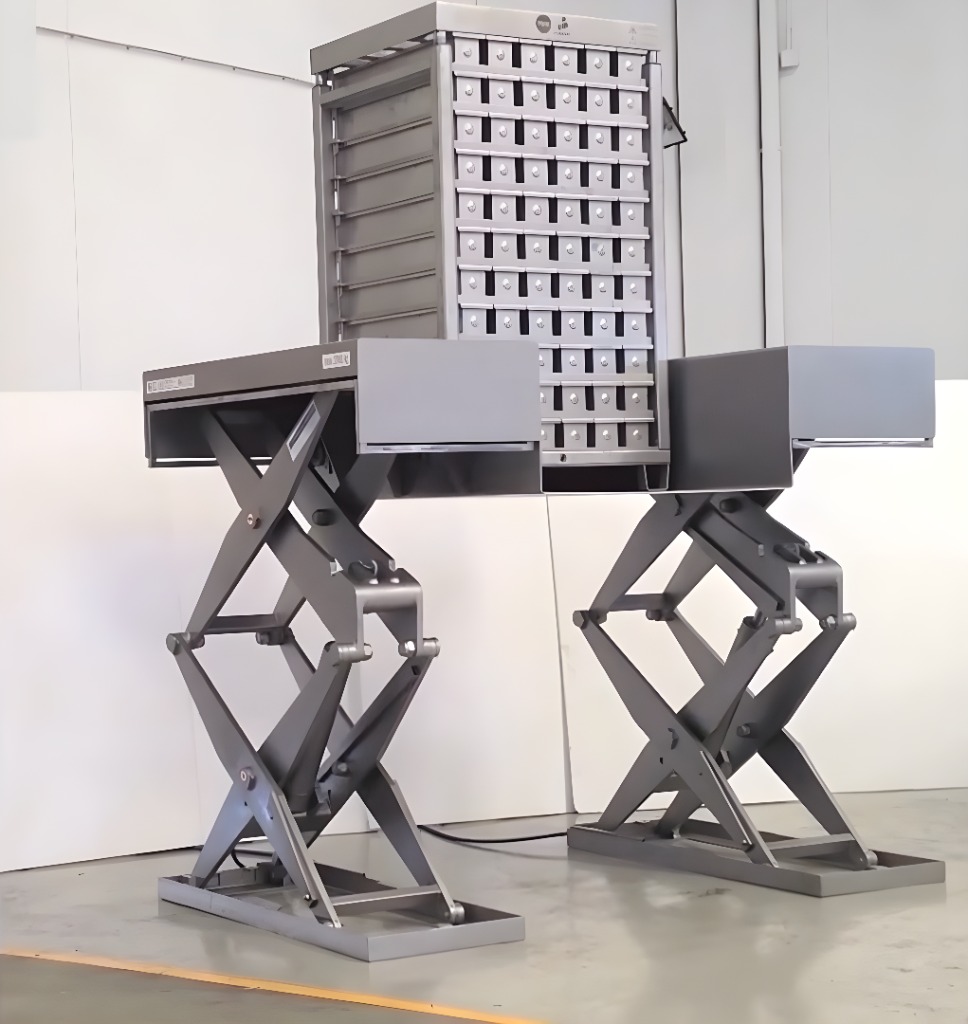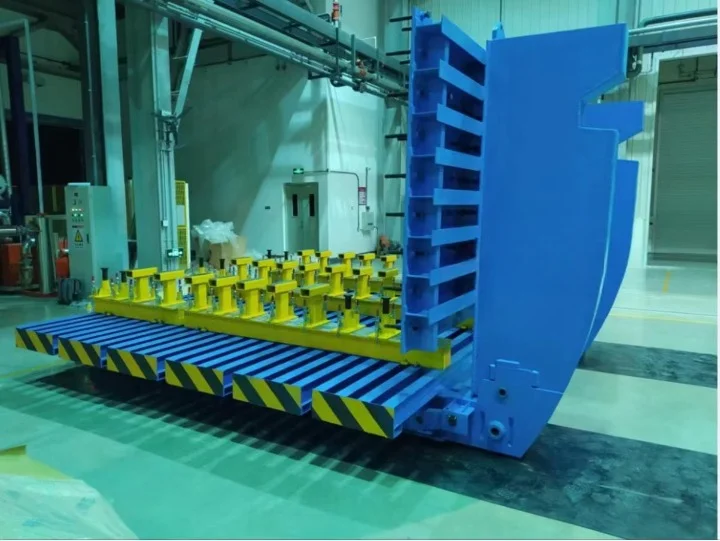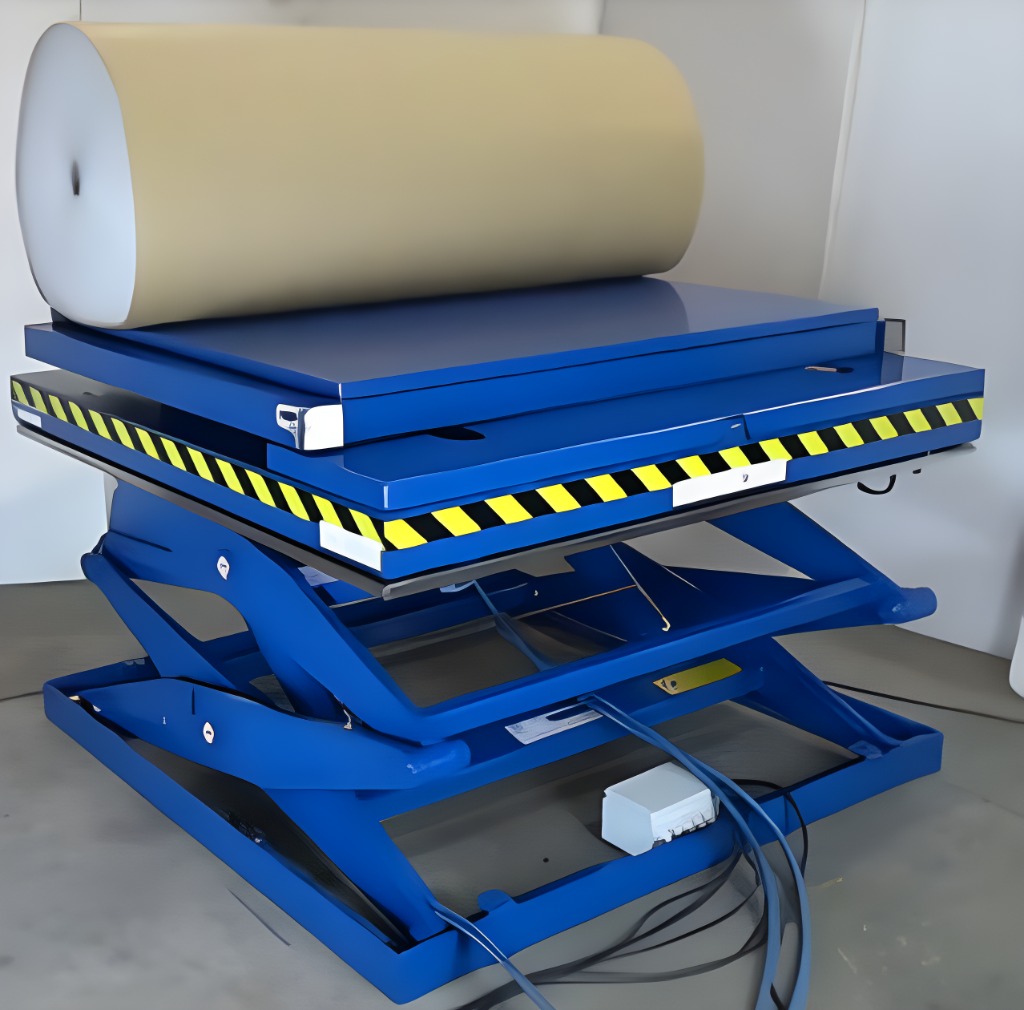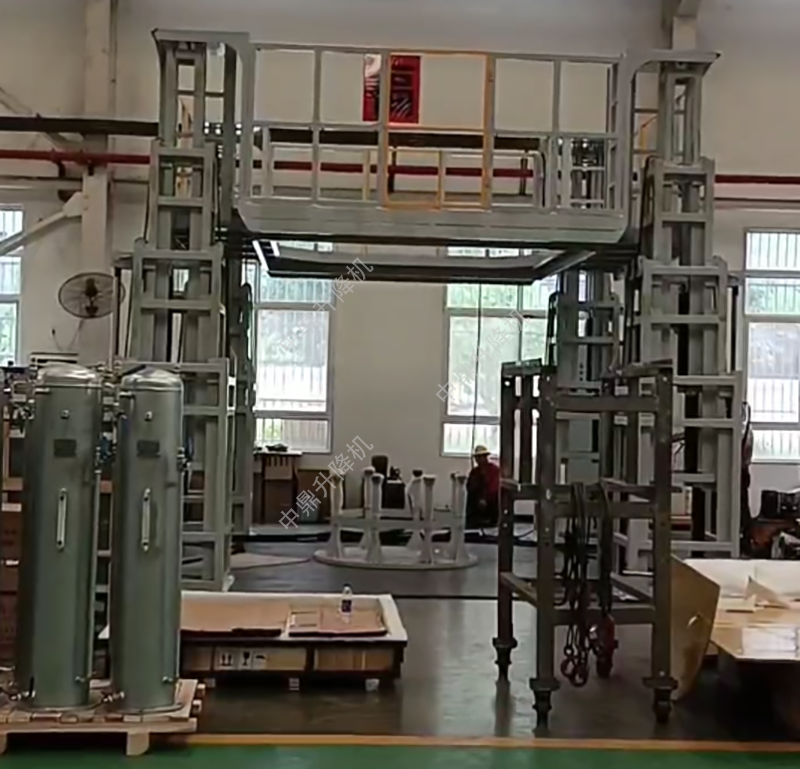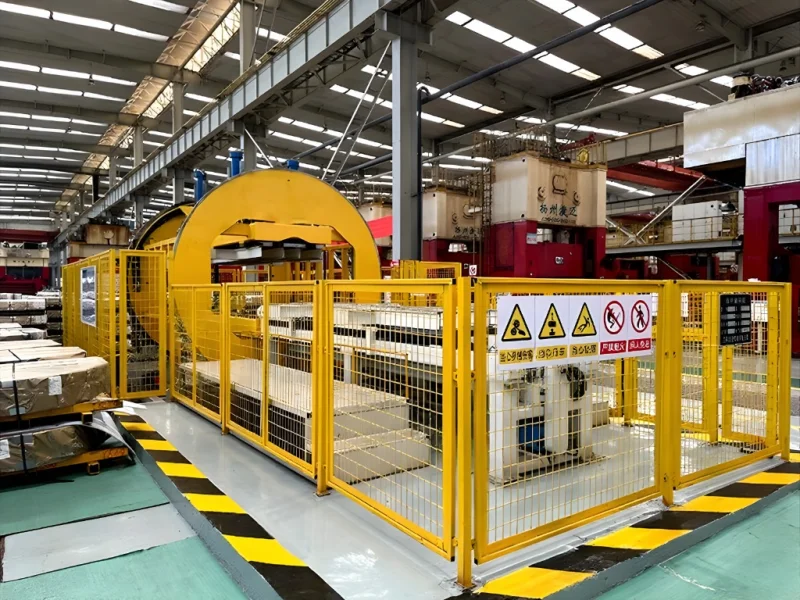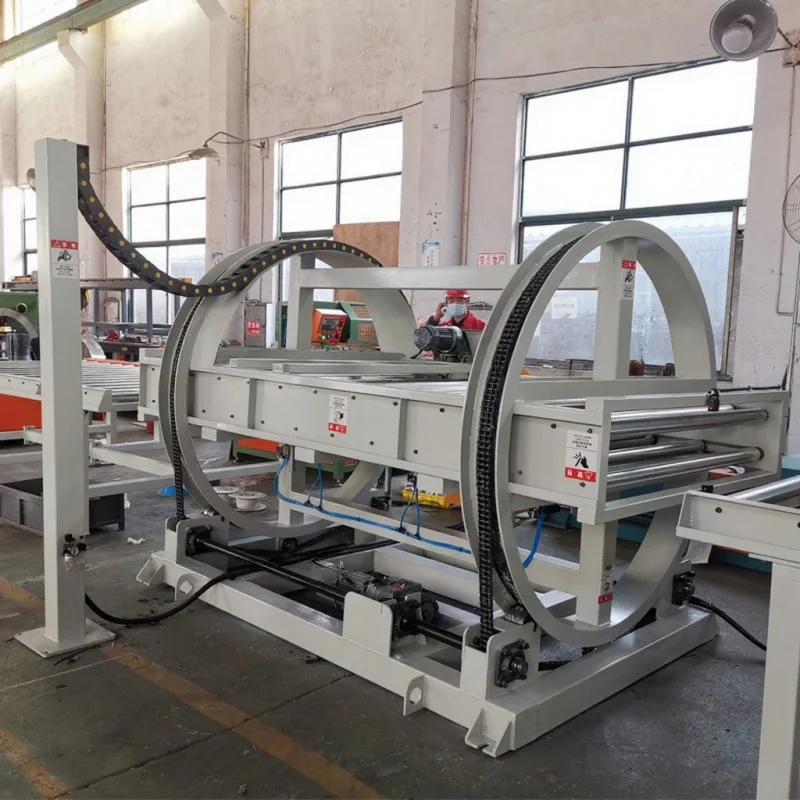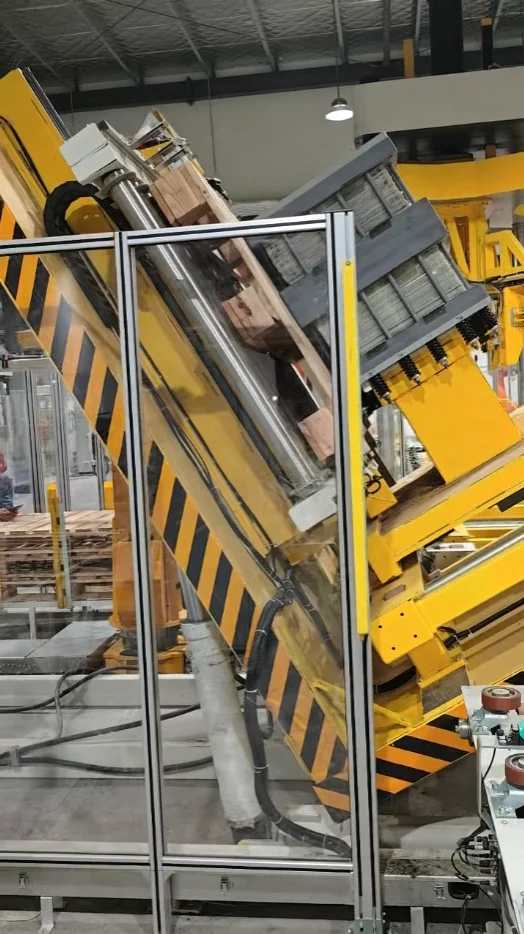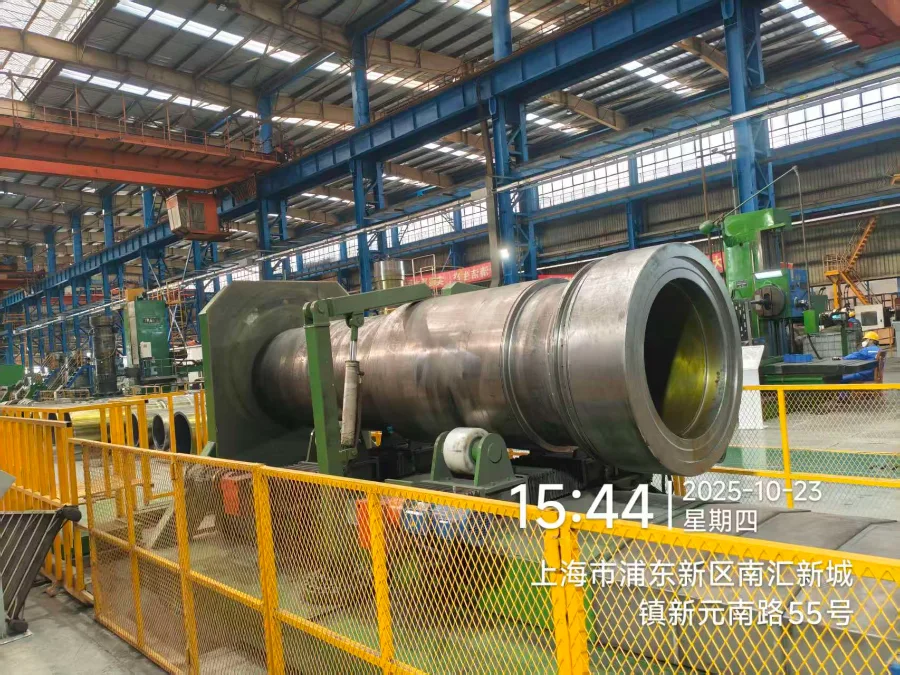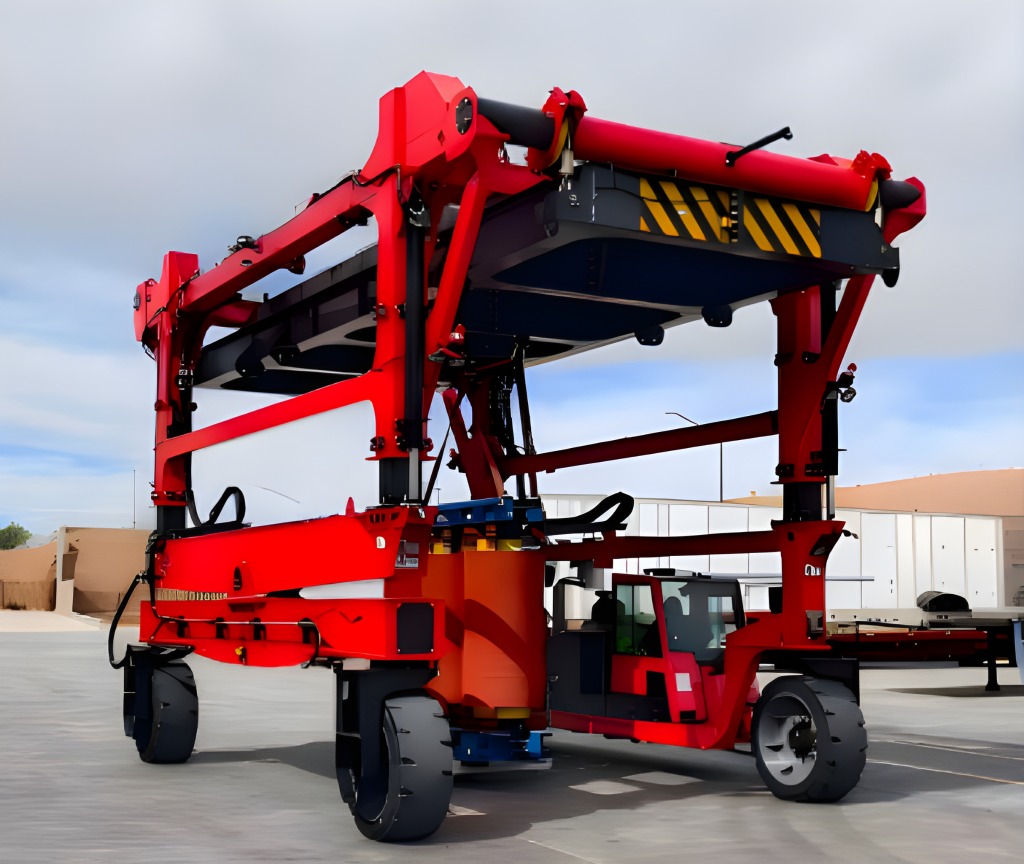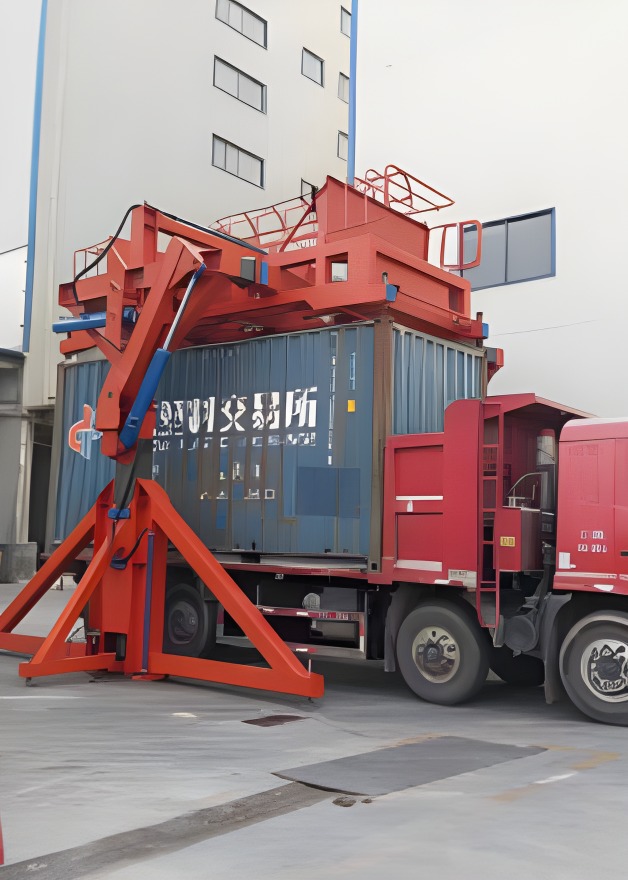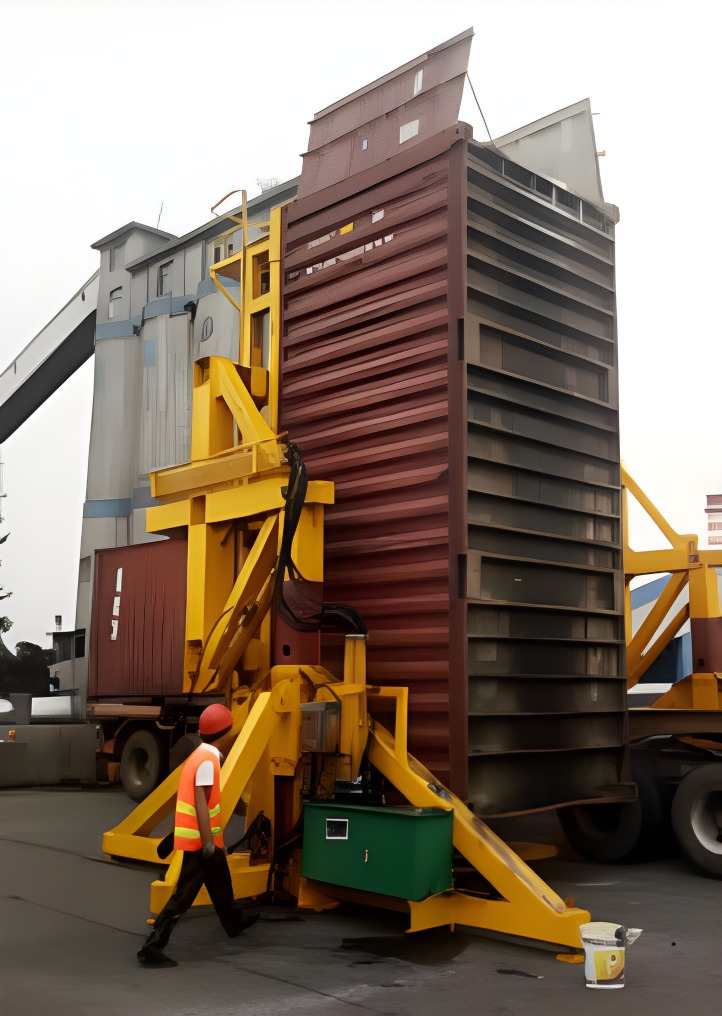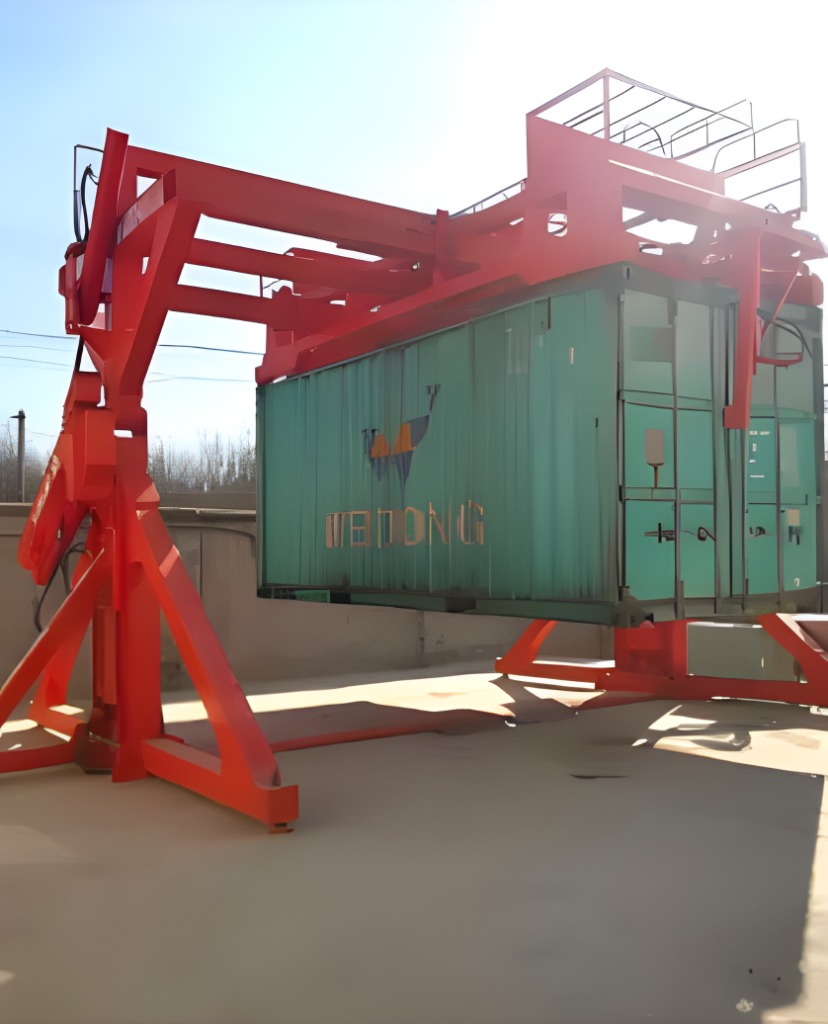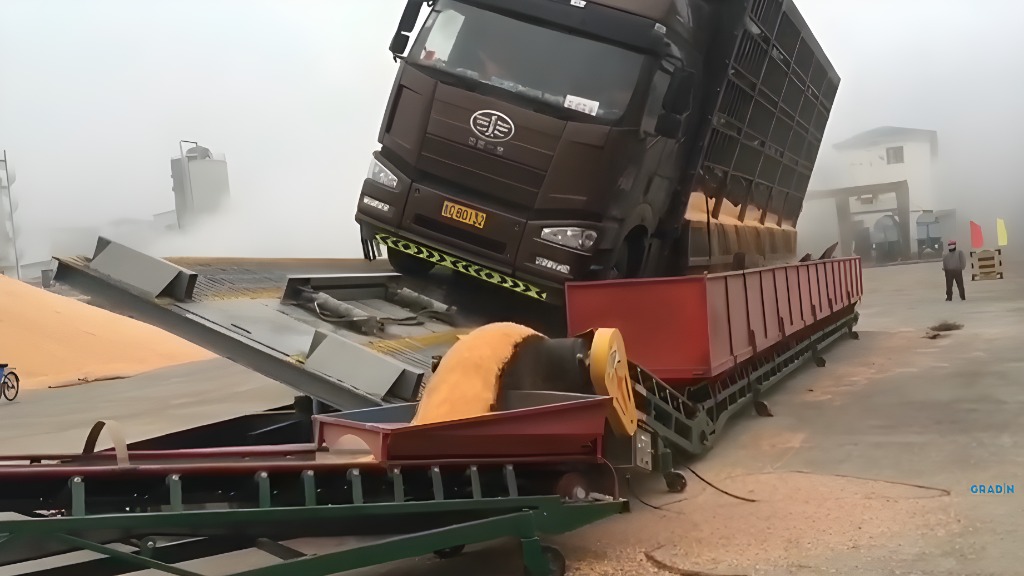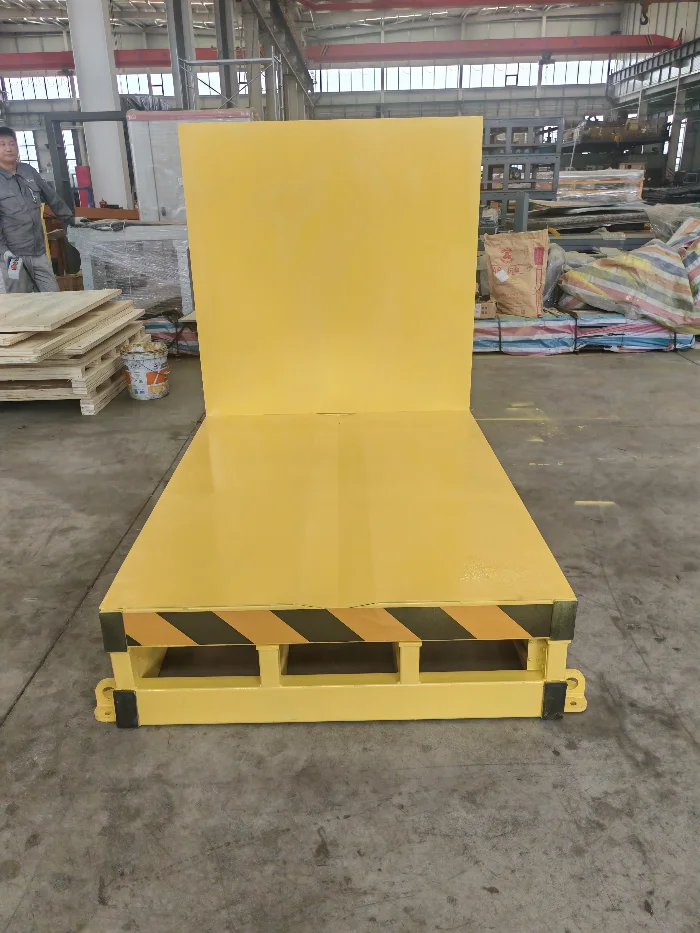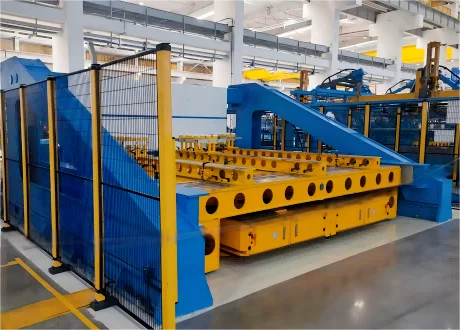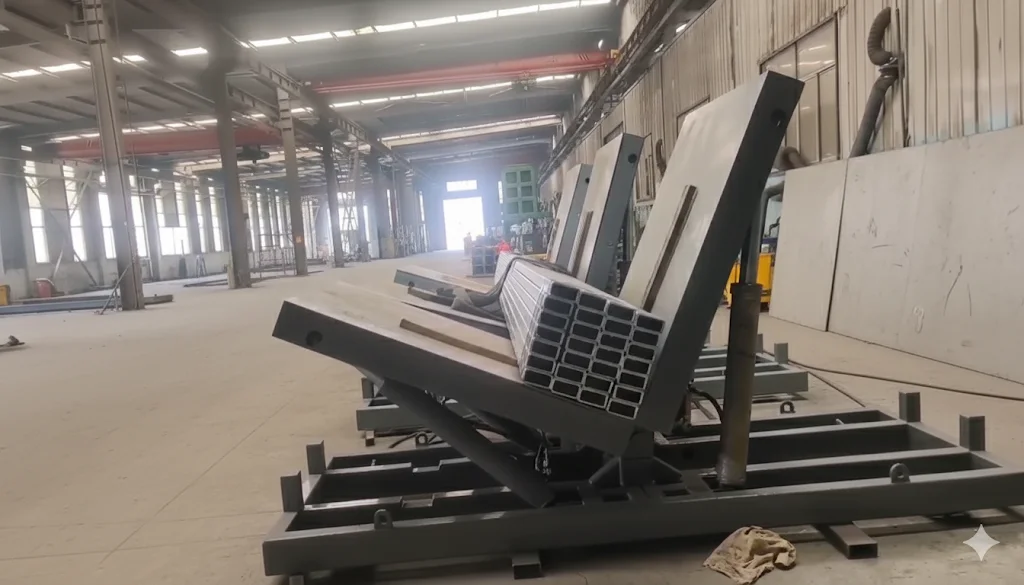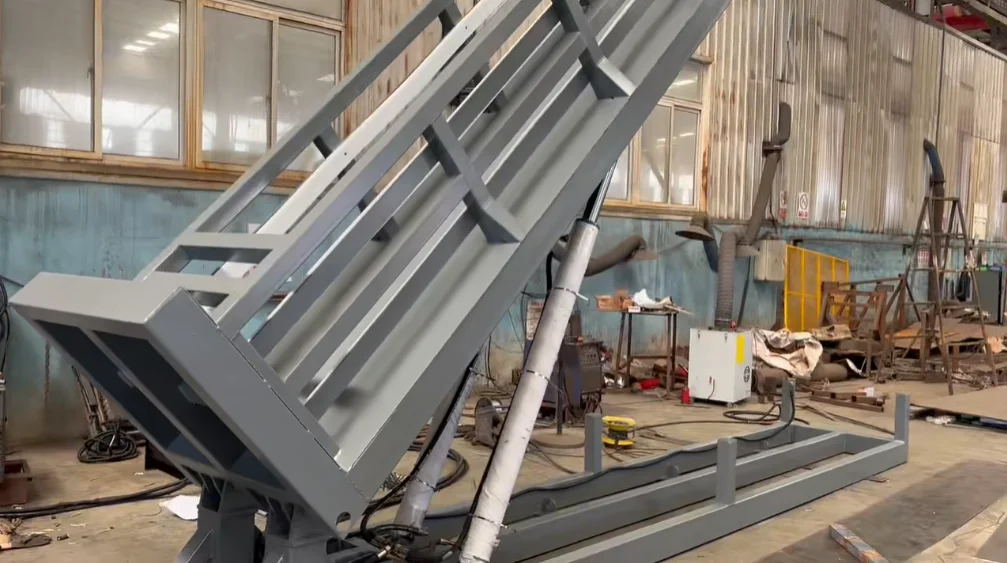10.22.2025 / 6 Minuten gelesen
Hydraulische Kerndrehtische und Stapeltische | 1-100 Tonnen
Übersicht
In dieser Fallanalyse wird untersucht, wie der hydraulische Kerndreh- und Stapeltisch die zentralen Herausforderungen bei der traditionellen Herstellung von Transformatorkernen löst und revolutionäre Verbesserungen in Bezug auf Effizienz und Qualität für die Produktion kleiner und mittlerer Transformatoren bringt.
Mit seiner modularen Bauweise, der präzisen hydraulischen Steuerung, der leistungsstarken Prozessanpassung und der außergewöhnlichen strukturellen Zuverlässigkeit ist der hydraulische Kerndreh- und Stapeltisch zu einem unverzichtbaren Schlüsselelement in modernen Transformatorenkernproduktionslinien geworden. Er ist nicht nur ein Werkzeug zur Erzielung einer qualitativ hochwertigen Kernfertigung, sondern auch eine treibende Kraft für Prozessverbesserungen und kosteneffiziente Effizienzsteigerungen in der Transformatorenproduktion.
Grundlegende Parameter
| Parameter Kategorie | Spezifikation Artikel | Details & Spezifikationen |
|---|---|---|
| Kernspezifikationen | Tragfähigkeit | 1 ~ 100 Tonnen (anpassbar) |
| Kompatible Kerntypen | Dreiphasiger Kern, fünfgliedriger Kern, Lamination | |
| Struktur der Plattform | Modulare Blockkombination (groß), Monoblock-Design (klein) | |
| Präzisionsmetriken | Tabelle Oberflächenverformung | < 2 mm |
| Rechtwinkligkeit (Stapeltisch vs. Drehträger) | < 2 mm (vor und nach dem Drehen) | |
| Mechanisch & Struktur | Einstellung des Strahls | Synchron bewegte Balken auf beiden Seiten |
| Antriebssystem | Hydraulisch zylindergetriebenes Drehen | |
| Drehgeschwindigkeit | Einstellbar | |
| Sicherheitsmerkmale | Drehbare Stützfüße (für Stabilität nach 90°-Drehung) | |
| Material des Rahmens | Warmgewalzter Stahl oder Schweißkonstruktion mit niedrigem Kohlenstoffgehalt, spannungsarmgeglüht | |
| Hydraulisches System | Wichtige Komponenten | Importierte Marken-Hydraulikkomponenten (z. B. Zylinder) |
| Synchronisierung | Hervorragende Synchronisation, gewährleistet verformungsfreier Kern | |
| Installation und Anpassungsfähigkeit | Anforderungen an die Installation | Groß: Fundament erforderlich; Klein: Kein Fundament, leicht zu bewegen |
| Kernfenster Anpassungsfähigkeit | Flexible Montage je nach Größe des Kernfensters, Hohe Anpassungsfähigkeit | |
| Abmessungen der Tischoberfläche | Maßgeschneidert nach Kundenanforderungen | |
| Prozess-Kompatibilität | Kompatible Prozesse | Geeignet für Oberes Joch Nicht-Entfernungs-Verfahren & Traditionelles Verfahren |
| Kompatibilität der Vorrichtungen | Hervorragende Synchronisation gewährleistet verformungsfreier Kern |
Herausforderungen und Lösungen
- Traditionelle Herausforderungen: Das herkömmliche Stapeln und Wenden von Kernen stützte sich in hohem Maße auf Brückenkräne und manuelle Arbeit, was zu Ineffizienz, schlechter Synchronisierung und potenzieller Kernverformung, hohe Sicherheitsrisiken und schlechte Anpassungsfähigkeit an verschiedene Fenstergrößen.
- Prozess-Optimierung: Der Tisch ermöglicht das Binden von Bändern, während der Kern horizontal liegt. Dadurch werden die komplexen Hilfsklemmen, die beim vertikalen Binden verwendet werden, überflüssig, was den Arbeitsablauf vereinfacht und die Zykluszeit verkürzt. Die Synchron bewegte Strahlen beidseitige, präzise Anpassung an unterschiedliche Kernsäulendurchmesser (MO), dadurch breite Anwendbarkeit
Zuverlässigkeitsdesign
- Zuverlässigkeit der Kernkomponente: Kritisch für hydraulische Komponenten (z. B. Zylinder) werden importierte Marken verwendetdie Gewährleistung einer langfristigen Betriebsstabilität und hohe Zuverlässigkeit von der Quelle aus, wodurch die Ausfallraten verringert werden.
- Strukturelle Stärke und Präzision: Die Finite-Elemente-Analyse (FEA) wird zur Konstruktionsoptimierung eingesetzt, um eine ausreichende Festigkeit und Steifigkeit unter Last (1-100 Tonnen) zu gewährleisten. Hochpräzise Messwerte, wie z. B. Tischverformung <2 mm und Rechtwinkligkeitsfehler <2 mm vor und nach dem Drehen, bilden eine solide Grundlage für die Qualität der Kernstapelung. Die Konstruktion der Drehstützen bietet zusätzlichen Sicherheitsschutz nach einer 90-Grad-Drehung.
